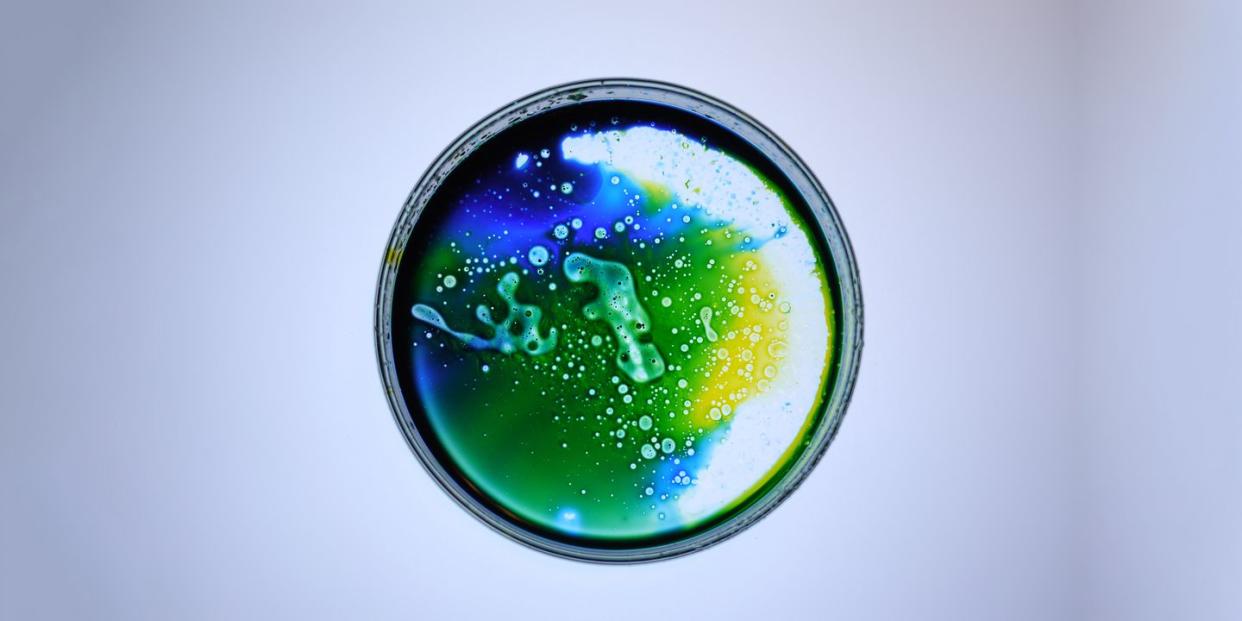Scientists Have Discovered a Lost World Containing the Very First Predator

"Hearst Magazines and Yahoo may earn commission or revenue on some items through these links."
Lurking in billion-year-old rock formations are microscopic creatures now called protosterol biota, which researchers say could be our earliest known ancestors.
This ancient organism likely feasted on bacteria in a marine environment.
These protosterol biota were more complex than bacteria, but researchers aren’t sure quite what the organism looked like.
The world’s first predator likely roamed the ocean for millions of years, feasting on bacteria and serving as a potential link to life on modern-day Earth—possibly even as the earliest known ancestors to humans. Researchers have just uncovered the fossilized remains of these creatures in a 1.6-billion-year-old undersea rock near Australia.
In a study published in Nature, a pair of professors now at The Australian National University and University of Bremen in Germany describe their discovery of an ancient organism that lived in Earth’s waterways 1.6 billion years ago.
Dubbed “protosterol biota,” these microscopic creatures are eukaryotes and predate the Last Eukaryotic Common Ancestor (LECA). Eukaryotes are a domain of living things including all animals, plants, and algae, and are set apart from bacteria by having a complex cell structure that includes a nucleus.
“Molecular remains of the protosterol biota detected in 1.6-billion-year-old rocks appear to be the oldest remnants of our own lineage,” Benjamin Nettersheim, study co-author and now a researcher at Bremen, says in a news release. “These ancient creatures were abundant in marine ecosystems across the world and probably shaped ecosystems for much of Earth’s history.”
While researchers have long wondered why ancient eukaryotic organisms didn’t take over the world, finding remnants of the organisms proved elusive. Nettersheim says that this new study shows protosterol biota were hiding in plain sight.
But they haven’t always been so sheepish. “We believe they may have been the first predators on Earth,” says Jochen Brocks, study co-author from Australia, “hunting and devouring bacteria.”
The find was made possible by a newfangled way to search for steroids, a key component of early molecules. “We employed a combination of techniques to first convert various modern steroids to their fossilized equivalent,” Brocks says. “Otherwise, we wouldn’t have even known what to look for.”
Believed to have disappeared from the Earth about 800 million years ago, Brocks claims that the Tonian Transformation period that saw the rise of more advanced nucleated organisms, which could have been the end of protosterol biota. “Just as the dinosaurs had to go extinct so that our mammal ancestors could become large and abundant, perhaps the protosterol biota had to disappear a billion years earlier to make space for modern eukaryotes,” Brocks says.
During the Tonian Transformation, Christian Hallmann, a participating scientist from the German Research Center for Geosciences, says that the protosterol biota may have existed side-by-side with modern eukaryotes such as red algae, but as Earth’s atmosphere became enriched with oxygen, the protosterol communities largely died out.
To make the new find, researchers studied fossil fat molecules from inside rocks at the bottom of the ocean. “Without these molecules, we would never have known that the protosterol biota existed,” Nettersheim says. “Early oceans largely appear to be a bacterial world, but our new discovery shows that this probably wasn’t the case.”
Once this uniquely structured molecule was understood, Nettersheim says they were able to start looking elsewhere and found a similar fossil molecule from dozens of other sites across the world. “Once we knew our target,” Brocks says in a news release, “we discovered that dozens of other rocks, taken from billion-year-old waterways across the world, were oozing with similar fossil molecules.”
You Might Also Like

